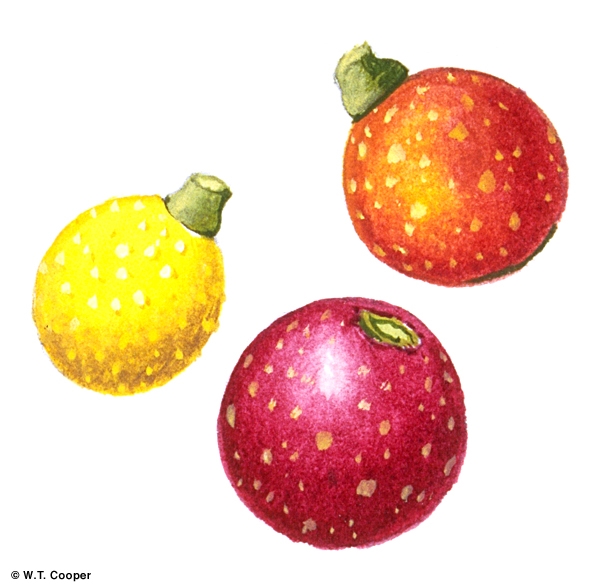Australian Tropical Rainforest Plants - Online edition
Ficus rubiginosa f. glabrescens (F.M.Bailey) D.J.Dixon

Dixon, D.J. et al (2002) Australian Systematic Botany 14(1): 150-153.
Fig, Port Jackson; Port Jackson Fig
A strangling fig, hemi-epiphyte or lithophyte to 30 m.
Figs pedunculate, globose, about 10-18 mm diam. Orifice triradiate, +/- closed by inflexed internal bracts.
Cotyledons ovate-oblong, about 5 mm long. At the tenth leaf stage: leaves ovate, apex acute or bluntly acute, base obtuse or cordate, margin entire, glabrous on the upper surface, with only a few hairs along the midrib on the underside, somewhat triplinerved at the base; oil dots not visible; stipules large, sheathing the terminal bud, about 20-40 mm long. Taproot swollen, carrot-like (Daucus carota). Seed germination time 31 to 51 days.
Occurs in CYP, NEQ, CEQ and southwards to north eastern New South Wales. Altitudinal range from near sea level to 900 m. Grows in rainforest, monsoon forest, the drier, more seasonal rain forest, dry scrubs and riverine vegetation throughout it's range.





